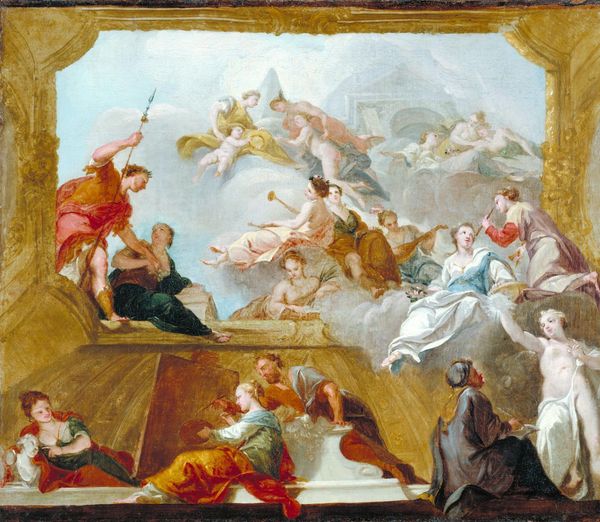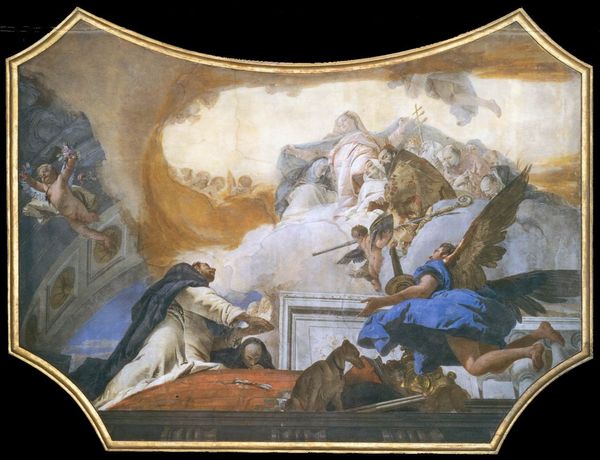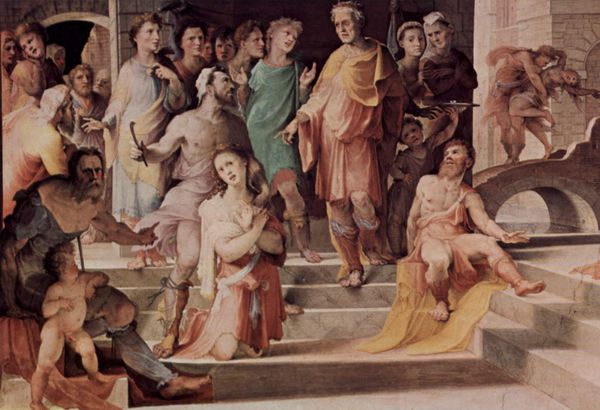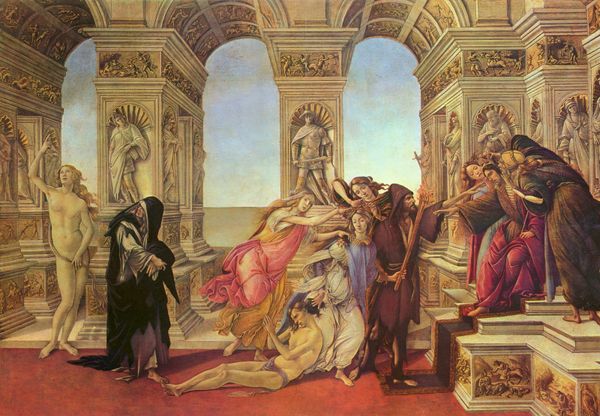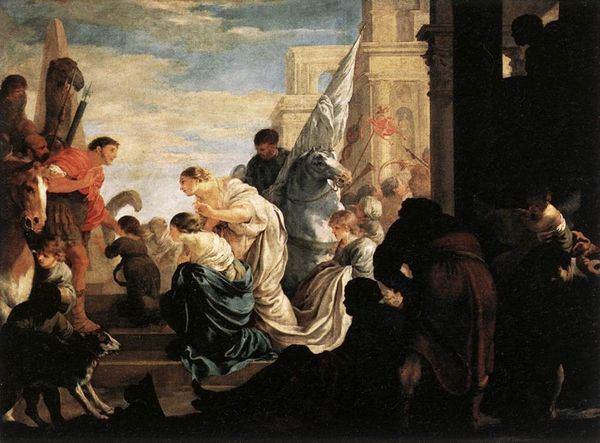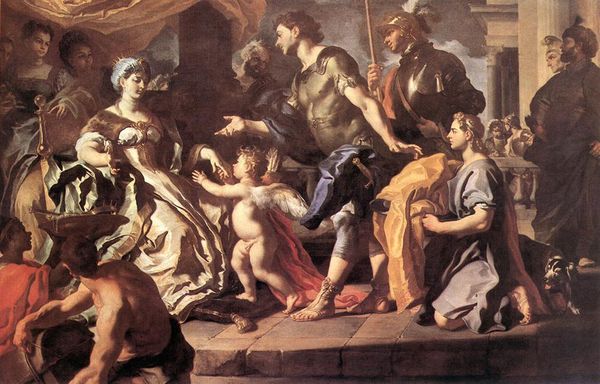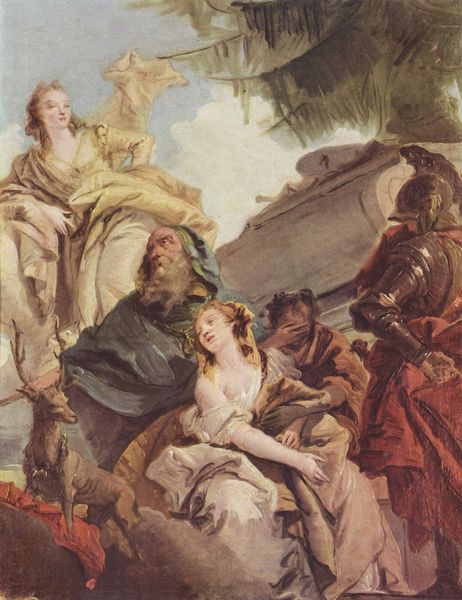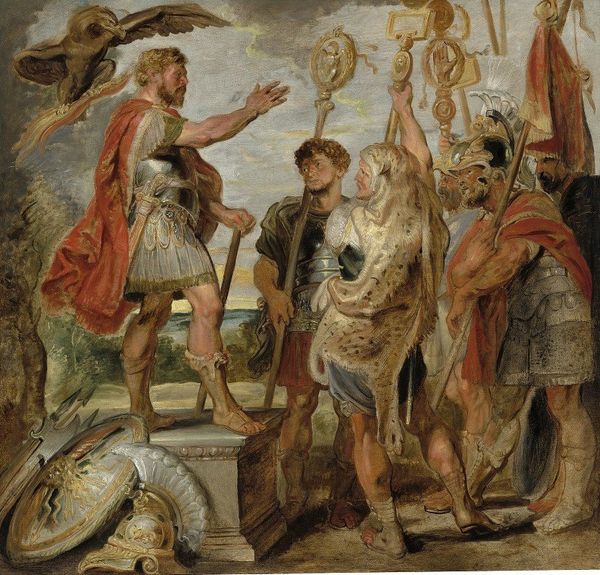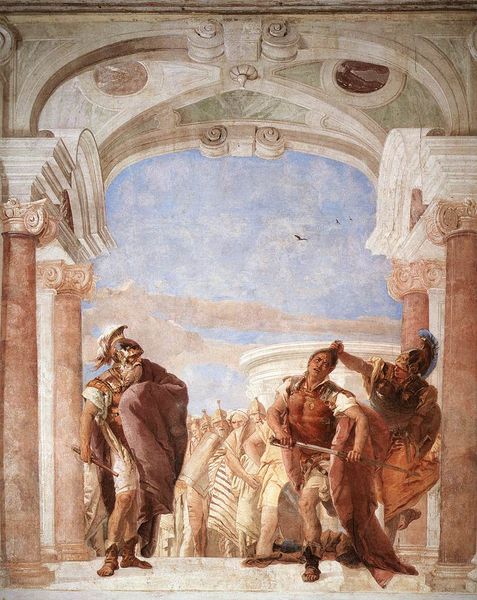
oil-paint, fresco
#
venetian-painting
#
allegory
#
narrative-art
#
baroque
#
oil-paint
#
figuration
#
fresco
#
oil painting
#
christianity
#
mythology
#
history-painting
#
academic-art
#
italian-renaissance
Dimensions: 655 x 360 cm
Copyright: Public domain
Curator: This fresco by Giovanni Battista Tiepolo, dating back to 1728, is entitled *The Judgment of Solomon*. What are your first thoughts? Editor: It's intense! The scene feels both chaotic and tightly controlled. The drama is dialed all the way up with the would-be executioner front and center. Curator: It is dramatic. Painted during the height of Tiepolo’s career, these vibrant frescoes would have been created using various pigments mixed with water, applied directly to the wet plaster, which required incredible speed and precision to complete successfully before the plaster dried. Editor: Right, we see this fresco applied to the walls or ceilings in the context of wealth and power, which is totally on point, when understanding art within its social context. Solomon's judgment isn't just a display of wisdom, it's about asserting authority. What does such a blatant show of force communicate to those within that space? Curator: Indeed. Considering the economic dynamics inherent in artistic creation, wealthy patronage was pivotal. Think about how it controlled the selection of subject matter, which was then filtered through religious doctrine and academic norms. In particular, the ways figures are depicted--especially in the costumes of the ruling-class officials--serve as material demonstrations of the distribution of resources. Editor: Precisely! The political symbolism is undeniable, but there is also a sense of constructed mythology in it. Tiepolo turns this scene from the Hebrew Bible into a demonstration of absolute power. He gives a sweeping panorama of both legal authority and public administration in a single shot, the sword acting not so much as a source of immediate danger but a constant, looming possibility for maintaining the rule of order. Curator: We have this emphasis on dynamism, expressed not just in terms of gestures but in the composition, as well. If you think of the ways in which the bodies press forward--and back--this creates a space for dramatic interplay that could only be found during the late Baroque. Editor: Viewing art with an understanding of the history is what makes Tiepolo's *The Judgment of Solomon* so compelling. There is a blending between visual pleasure and didactic intention, an effect designed for shaping attitudes about justice and political legitimacy. Curator: Seeing its blend of technique and context really offers us some powerful insights.
Comments
No comments
Be the first to comment and join the conversation on the ultimate creative platform.
